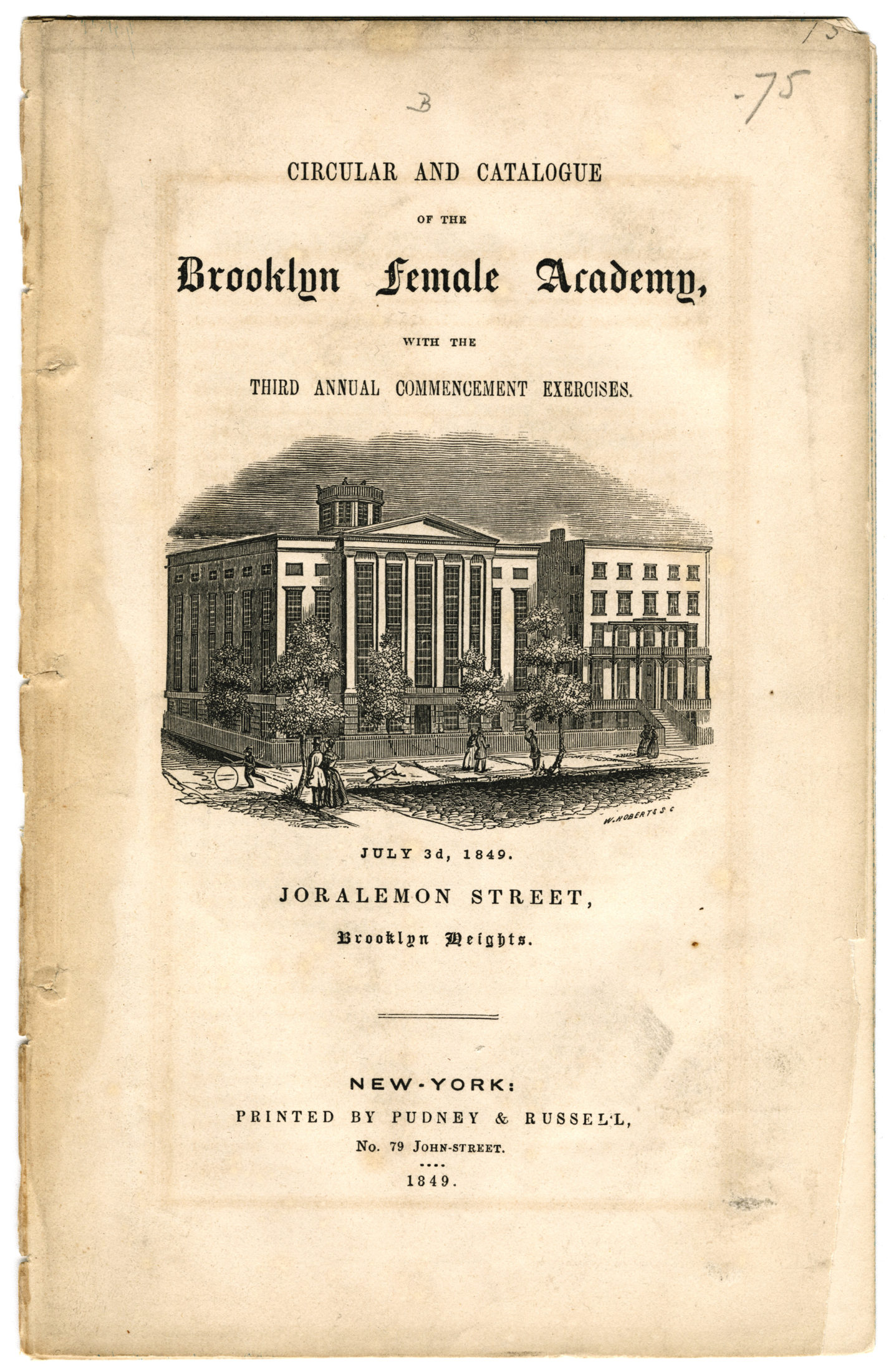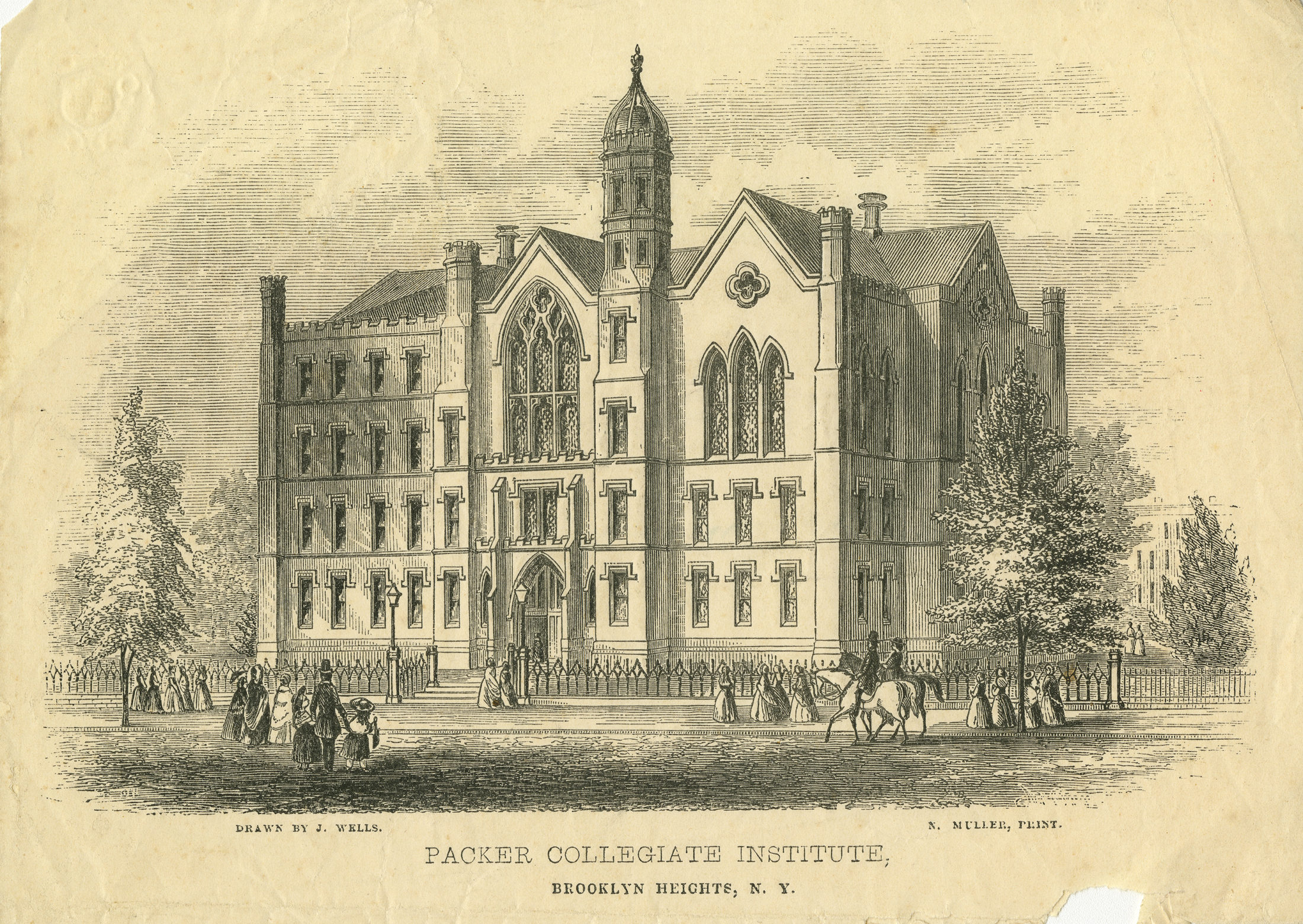Beyond the Threads
The Evolution of Women’s Education in the 1800s
Martha Ovington’s meticulously hand-stitched red, white, and blue wool flag offers a rare opportunity to consider the transition that occurred in women’s training and education in urban America in the 1800s.
The carefully cut and pieced-together flag displays Ovington’s skill with a needle and mastery of sewing skills long taught to young girls to aid in their domestic work. By the early 1860s, women’s education had evolved into a more rigorous academic pursuit, on par with men’s education. When she sewed this flag, Ovington was among the first generation of affluent women to study at and graduate from Brooklyn’s Packer Collegiate Institute.

Circular and Catalogue of the Brooklyn Female Academy, 1849
Packer Collegiate Institute Records (2014.019)
Brooklyn Historical Society
The Packer Collegiate Institute originally opened to students as the Brooklyn Female Academy on May 4, 1846. It was renamed in early 1853 after a fire ravaged the original building. Brooklynite Harriet L. Packer gave a gift of $65,000 for the rebuild, asking that the school be renamed after her late husband William, a former BFA trustee.

Packer Collegiate Institute (Brooklyn Heights), late 1800s
- Wells & N. Muller
Packer Collegiate Institute Records (2014.019.14.01.001)
Brooklyn Historical Society
Ovington attended Packer in her late teens. For students fourteen and older, collegiate classes included not only religious education and language and arts training but also instruction in physics, botany, philosophy, and constitutional law. Ovington graduated in July 1861 alongside more than two dozen classmates from across the country, including one from the Sandwich Islands, known today as Hawaii.

“Annual Commencement Exercises at the Packer Collegiate Institute”
Brooklyn Daily Eagle, July 3, 1861
Brooklyn Public Library
According to Packer alumni records, several graduates from the Packer class of 1861 went on to successful teaching careers of their own. Ovington was a dedicated student, but her family later blamed her “overexertion” at school for the chronic health issues that later claimed her life.